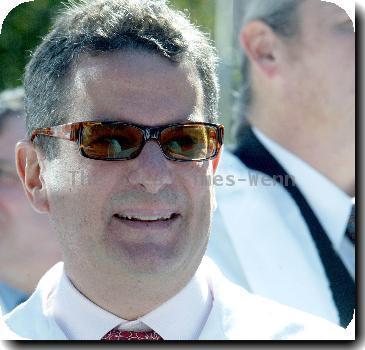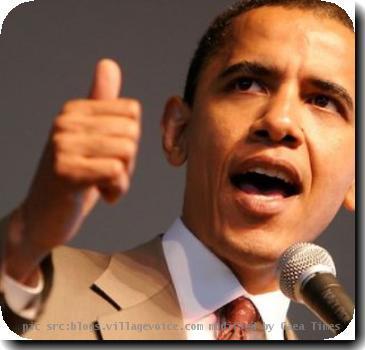Israel says it will continue building in east Jerusalem despite US pressure
By APFriday, March 26, 2010
Israel to continue building in east Jerusalem
JERUSALEM — Israel insisted Friday it would continue building in contested east Jerusalem, taking an uncompromising stance against U.S. pressure following a tense visit by Prime Minister Benjamin Netanyahu to Washington.
Two Israeli soldiers, meanwhile, were killed in a gunbattle with Gaza militants in some of the fiercest fighting in the territory since Israel’s military offensive there more than a year ago. The deaths were the first for the Israeli military in Gaza since January 2009.
Four militants died in the clashes and in another exchange of fire nearby. Gaza’s Islamic Hamas rulers announced that their gunmen were involved — marking a shift from the group’s tendency over the past year to avoid confrontation with Israeli forces.
Israel’s refusal to change its long-standing policy on east Jerusalem signaled that a high-profile rift between the U.S. and Israel remained wide, with stalled Mideast peace talks caught in the middle.
“The prime minister’s position is that there is no change in Israeli policy on Jerusalem,” Netanyahu’s office said in a statement. Shortly after, he convened a previously scheduled meeting of key ministers to frame a response to Washington’s demands for Israeli peace gestures.
Netanyahu’s office issued a statement after the five-hour meeting, offering no details of the discussions but saying ministers would meet again soon. Israel Radio said no decisions were made and that Israel likely wouldn’t deliver its reply to the U.S. before the Jewish Passover holiday ends April 5.
The newly announced Israeli construction in east Jerusalem derailed U.S.-mediated negotiations that Palestinians and Israelis had agreed to launch just before the diplomatic feud erupted.
The Palestinians want the eastern sector of the holy city as the capital of a future state that would include the West Bank and Gaza, and view the expanding Jewish presence in east Jerusalem as a challenge to their claim.
Netanyahu’s meetings with President Barack Obama and other top U.S. officials did not appear to quell U.S. anger over a major east Jerusalem construction project whose announcement in the middle of a visit by Vice President Joe Biden touched off the worst diplomatic row between the two countries in decades.
In the Syrian capital of Damascus, tens of thousands of Syrians and Palestinians gathered Friday for a government-orchestrated “march of anger” against Israeli construction in Jerusalem’s eastern sector.
Israel annexed east Jerusalem immediately after capturing it from Jordan during the 1967 Mideast war and does not consider Jewish construction there to be settlement activity. Over the years, it has built a ring of Jewish neighborhoods in east Jerusalem to cement its control there. Some 180,000 Israelis live there and about 2,000 more live in Palestinian neighborhoods.
The international community does not recognize the annexation and equates the Jewish construction there with West Bank settlements.
Should Netanyahu decide at any point to bend on east Jerusalem, he would likely do so at the expense of watching his hardline government splinter. He could, however, replace his hawkish coalition partners with the moderate Kadima Party, whose leader, Tzipi Livni, is open to sharing the holy city.
Israel’s unyielding stance earned Netanyahu a chilly reception this week at the White House. In what was widely regarded as a snub, the news media were not allowed into any part of the two meetings between Obama and Netanyahu. No joint news conference was held afterward, no statements were issued about what happened, and the White House did not even release a photograph.
Netanyahu received a warm public reception from Congress, however, an indication that the administration might be limited in how much pressure it can apply. American Jewish backers of Israel are traditionally reliable supporters of the Democratic Party.
The outbreak of violence in Gaza, which subsided by early evening, highlighted the region’s volatility as the U.S. pushes to get Israeli-Palestinian peacemaking back on track.
Israel’s military said the soldiers were killed inside Gaza during an exchange of fire with militants who were planting explosives along the security fence on the Israel-Gaza border. It was the first time an Israeli soldier had been killed in Gaza since Jan. 27, 2009, shortly after last year’s war ended, the military said.
It said Israeli troops opened fire on the militants, killing two. In the same area, soldiers also battled another group of militants placing explosives, killing two, military spokeswoman Lt. Col. Avital Leibovich said.
Hamas official Ismail Radwan told Associated Press Television News that the deaths of the soldiers was a “gift” from Hamas to Jerusalem and to Hamas operative Mahmoud al-Mabhouh, who is widely believed to have been slain by Israeli agents in January in a Dubai hotel.
Further south in Gaza, Israeli forces backed by tanks and helicopter gunships battled throughout the afternoon and evening with militants in a sparsely populated border area near the city of Khan Younis, Hamas security officials said. Militants responded with mortar fire, they said.
The Israeli military described the action in the area as a routine defensive operation meant to protect southern Israel from militants who attack it with rockets and explosives.
Gaza medical officials reported that eight civilians were injured in the fighting, including three hurt in an aerial attack.

